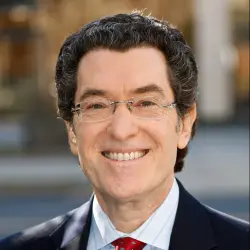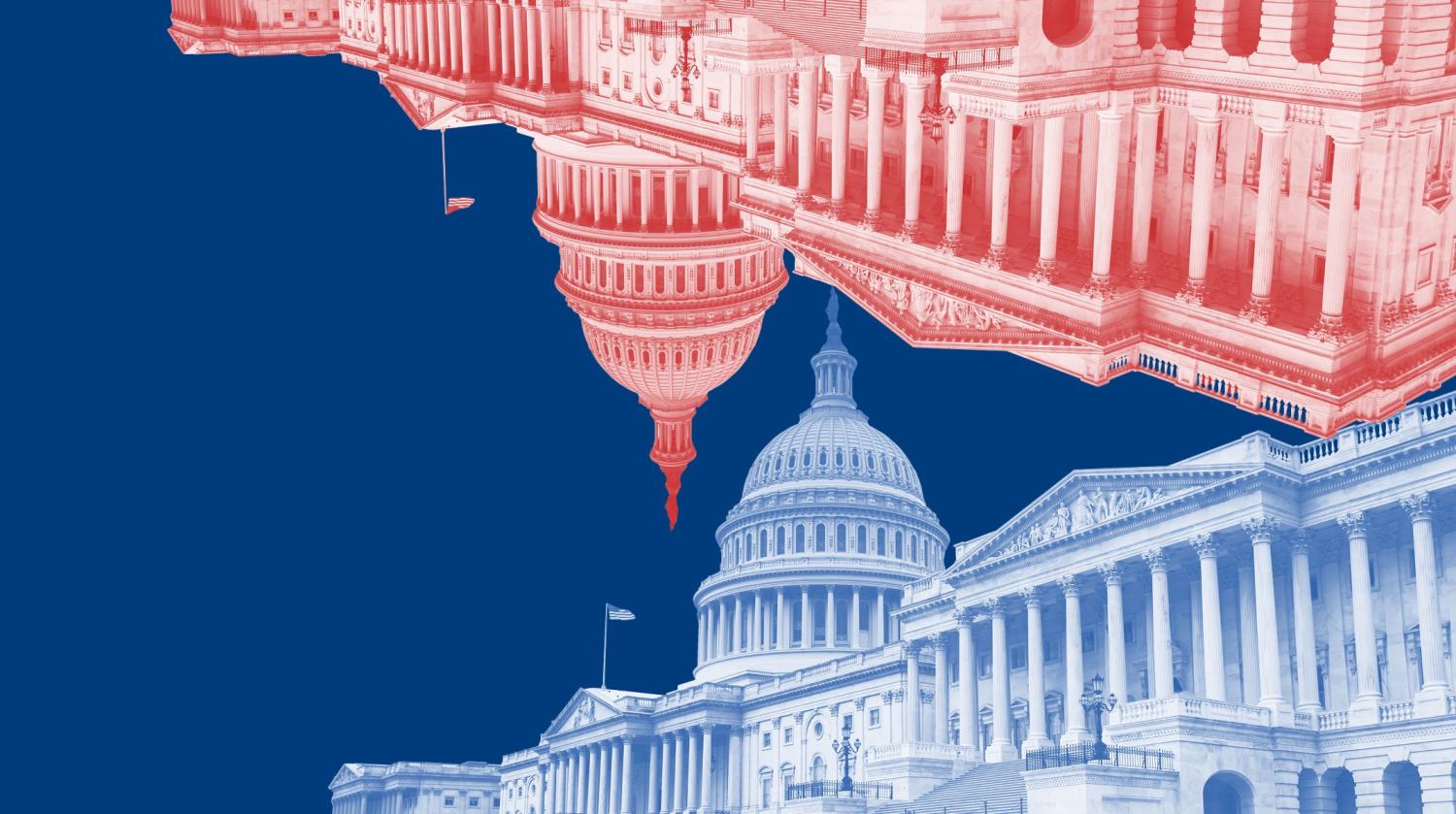In the America of 2021, a seemingly unstoppable force has met an apparently immovable object. Across the nation, state officials are acting with brazen impunity in curtailing voting rights. At best nakedly partisan, and at worst openly racist, legislators are proposing and passing, and some governors are signing, statutes that will strip the ballot from millions, seize the power to overturn election outcomes those partisans don’t like, and potentially tilt the political playing field for decades to come.1 No wonder President Biden has declared it the “most significant test of our democracy since the Civil War.”2
“Despite majorities in both houses of Congress that have expressed support for voting rights legislation, the Senate filibuster stands in the way.”
Federal legislation could prevent this by establishing reasonable best practices for voter registration and early voting, and by barring the worst of the provisions.3 But that is where the immovable object comes in. Despite majorities in both houses of Congress that have expressed support for voting rights legislation, the Senate filibuster stands in the way.4 Overcoming a filibuster requires “cloture,” or a supermajority of 60 votes to proceed to debate and vote on a bill in the Senate.5 A preliminary test vote on a motion to proceed to one bill that would help address the voter suppression wave, S. 1, failed 50-50 on party lines.6Vice President Harris was available to cast the decisive 51st vote on the bill—but because of the filibuster, the cloture threshold fell 10 votes short, and the Senate could not proceed to vote on or even debate the bill itself.7 Senate Majority Leader Chuck Schumer brought up S. 1 again on August 11, together with two pieces of companion legislation that focused on redistricting and campaign finance. All three bills were filibustered by the minority.
We do not believe that the unstoppable forces of voter suppression and election subversion are, alas, going anywhere. We only expect those forces to intensify. In their face, doing nothing is not viable. Or as Senator Joe Manchin (D-W.Va.) has said, “inaction is not an option.”8 Senator Manchin has also been among those defending the filibuster as a vehicle for compromise.9 He has insisted that he will not eliminate it, but he has mused publicly and privately about how it might be modified.10
In this paper we assess a range of possible filibuster modifications. We believe the Senate will also consider these options as the pressure to do something to meet the crisis ratchets up. The history of the filibuster is the history of such changes, and so we begin with a survey of that history in Part I. In Part II, we catalog today’s principal proposals for modification, enumerating their pros and cons. We include remedies such as reducing the number of senators needed to open debate in the face of a filibuster; obligating the objectors to be present with one of their number speaking at all times during a filibuster; and shifting the burden to them to muster the requisite number of votes required to maintain the filibuster whenever challenged, instead of requiring the 60 who wish to proceed to so vote.
In Part III, we advocate for one additional option that the authors have previously written about, and that has been getting some significant proponents of late. We term that approach “democracy reconciliation.”11 It is based upon the existing practice of budget reconciliation, which allows certain fiscal measures to have an up-or-down simple majority vote.12 As we explain, we would craft a similar exception for voting measures, allowing them a similar opportunity to be voted upon by a majority. Reconciliation operates on a key principle known as the Byrd Rule, named after the late West Virginia Senator Robert Byrd.13 Because the current fate of the filibuster swirls around his successor, Senator Manchin, one may refer to this hoped-for new compromise of democracy reconciliation as “the Byrd-Manchin” Rule.
“It is hard to understand how the Senate will stand by and do nothing while our democracy is dismantled.”
We assess that the pressure to effectuate one or more of these filibuster reform proposals is building. As we explain below, influential figures inside and outside of Congress have renewed calls for a solution.14 It is hard to understand how the Senate will stand by and do nothing while our democracy is dismantled (and many senators’ jobs threatened). Still, it remains to be seen whether any of the fixes we discuss will be undertaken. Because the filibuster is a perpetual obstacle to reform, and because even if modified it is unlikely to be eliminated, we articulate the full range of reform options. But first, we begin with the history of this controversial procedure.
-
Footnotes
- Protect Democracy, States United Democracy Center, and Law Forward, “Democracy Crisis Report Update: New Data and Trends Show the Warning Signs Have Intensified in the Last Two Months,” States United Democracy Center, June 10, 2021, https://statesuniteddemocracy.org/wp-content/uploads/2021/06/Democracy-Crisis-Part-II_June-10_Final_v7.pdf; Protect Democracy, States United Democracy Center, and Law Forward, “A Democracy Crisis in the Making,” States United Democracy Center, April 22, 2021, https://statesuniteddemocracy.org/wp-content/uploads/2021/04/FINAL-Democracy-Crisis-Report-April-21.pdf.
- Michael Collins and Rebecca Morin, “‘Have you no shame?’: Biden against efforts in GOP-led states to restrict voting rights,” USA Today, July 14, 2021, https://www.usatoday.com/story/news/politics/2021/07/13/voting-rights-biden-warn-right-vote-under-assault/7936086002/.
- “The Impact of H.R. 1 & S.1 on Voting: An Analysis of Key States,” States United Democracy Center, May 6, 2021, https://statesuniteddemocracy.org/wp-content/uploads/2021/05/HR1Report_UPDATED_5.06.21_800PM.pdf; “The Impact of H.R. 1 & S.1 on Voting: An Analysis of Key States,” States United Democracy Center, March 23, 2021; Norman Eisen and Joanna Lydgate, “The strongest antidote to voter suppression bills,” CNN, April 7, 2021, https://www.cnn.com/2021/04/06/opinions/three-vaccines-protect-voting-rights-eisen-lydgate/index.html. Consistent with Brookings policy, this paper takes no position on any particular bill.
- Nicholas Fandos, “Democrats Unite Behind Voting Rights Bill as It Faces a Senate Roadblock,” The New York Times, June 21, 2021, https://www.nytimes.com/2021/06/21/us/politics/senate-voting-rights-bill.html.
- “About Filibusters and Cloture,” U.S. Senate, https://www.senate.gov/about/powers-procedures/filibusters-cloture/overview.htm.
- Jacob Pramuk, “Senate Republicans block Democrats’ sweeping voting, ethics bill,” CNBC, June 22, 2021, https://www.cnbc.com/2021/06/22/senate-to-vote-on-s1-for-the-people-act-bill.html.
- “Votes to Break Ties in the Senate,” U.S. Senate, https://www.senate.gov/legislative/TieVotes.htm#:~:text=%22The%20Vice%20President%20of%20the,breaking%20votes%20have%20been%20cast.
- Joe Manchin and Lisa Murkowski to Nancy Pelosi, Charles Schumer, Kevin McCarthy and Mitch McConnell, May 17, 2021, https://www.manchin.senate.gov/imo/media/doc/210517%20Bipartisan%20Voting%20Rights%20Act%20Reauthorization%20Letter.pdf?cb.
- Joe Manchin, “Joe Manchin: Why I’m voting against the For the People Act,” Charleston Gazette-Mail, June 6, 2021, https://www.wvgazettemail.com/opinion/op_ed_commentaries/joe-manchin-why-im-voting-against-the-for-the-people-act/article_c7eb2551-a500-5f77-aa37-2e42d0af870f.html.
- Katherine Fung, “Joe Manchin Signals He’s Open to Filibuster Reform, Offering Hope to Democrats,” Newsweek, June 6, 2021, https://www.newsweek.com/joe-manchin-signals-hes-open-filibuster-reform-offering-hope-democrats-1601338.
- Norman Eisen, Richard W. Painter, and Jeffrey Mandell, “The most important exception the Senate can make,” CNN, March 5, 2021, https://www.cnn.com/2021/03/05/opinions/senate-filibuster-exception-eisen-painter-mandell/index.html.
- “Budget Reconciliation: The Basics,” House Committee on the Budget, U.S. House of Representatives, June 22, 2021, https://budget.house.gov/publications/fact-sheet/budget-reconciliation-basics.
- Ibid.
- Ian Millhiser, “Biden’s plan for a ‘talking filibuster,’ briefly explained,” Vox, March 16, 2021, https://www.vox.com/2021/3/16/22335133/joe-biden-talking-filibuster-reform-senate-joe-manchin-george-stephanopoulos; Lisa Desjardins, “What every Senate Democrat has said about filibuster reform,” PBS, June 23, 2021, https://www.pbs.org/newshour/politics/what-every-senate-democrat-has-said-about-filibuster-reform.







